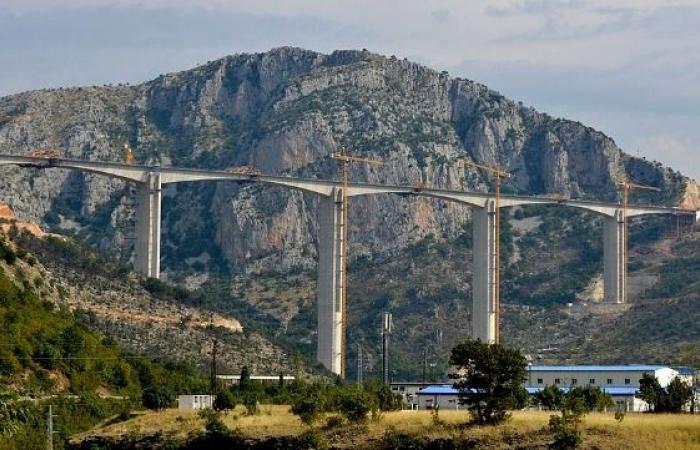By
The strategist
25.10.2020 09:01:13
[By John Varano]
The 17 + 1 initiative was launched in 2012 and was Beijing’s flagship in promoting China’s economic relations with the nations of Central and Eastern Europe (CEE). It is largely perceived as an extension of the Chinese Belt and Road Initiative. Some in Europe are concerned about the subversive impact 17 + 1 could have on the European project, while others feel it is already dissolving. After a decade of cooperation between the CEE countries and China under the 17 + 1 mechanism, many CEE countries have strong concerns about a close partnership with China due to three major trends that are taking shape.
First, despite its great promises made at numerous 17 + 1 summits, China has invested little in CEE countries. In 2012, Beijing promised to provide CEE with a $ 12 billion line of credit to help drive new developments in infrastructure, technology and renewable energy. The failure to make significant investments has turned the tide for most of the CEE countries. So far, only four of the around 40 projects conceived as part of the 17 + 1 proposal have been successfully carried out: the port of Piraeus in Greece, the Pupin Bridge and the expansion of the Kostolac power plant in Serbia, as well as a large motorway in Montenegro.
After several years of 17 + 1 summits, there have been few tangible results for most CEE countries, and many have expressed disappointment at the prospect of future economic engagement with Beijing. In January 2020, the Czech Republic decided to cancel the ninth summit, scheduled for April, as China was not actually investing – a blow to Beijing, as Czech President Milos Zeman once described the initiative as the “flagship of Chinese investments” for Prague. The summit was later postponed indefinitely due to the Covid-19 pandemic.
The leading project of 17 + 1, the high-speed line Budapest – Belgrade, is to be continued. The clear lack of actually implemented major projects has increased the mistrust between China and the CEE countries. The economic downturn resulting from the pandemic will make it more difficult for Beijing to get involved in CEE projects as it prioritizes its own recovery domestically. BRI projects are likely to get smaller when the focus is on targeted strategic acquisitions. China can also reward CEE countries that continue to be supportive.
Second, most CEE countries are reassessing the political consequences of their interdependence on China. At the start of the 17 + 1 initiative, the EU expressed concerns that the inclusion of CEE countries could potentially divide Europe. At one point, China alerted several EU members by hosting the Visegrad group of the Czech Republic, Hungary, Poland and Slovakia, praising these nations as a “dynamic force” despite their clashes with Brussels over immigration and fundamental rights. With its growing economic power, China had amassed enough influence to exert a significant influence on the CEE countries’ policy towards Beijing. For example, in 2017 the EU’s declaration to the United Nations, denouncing China’s human rights violations, was blocked by Hungary and Greece, with Athens calling it “unconstructive criticism of China”.
However, the CEE countries are increasingly shifting the focus of their commitment to China from economic opportunities to potential political and security risks. In May Romania ended its joint venture with a Chinese company to build a nuclear power plant. Latvia declared China a national security threat after its intelligence agency announced its concerns over cyber espionage. These and other developments resulted in most CEE countries, with the exception of Greece, Hungary and Serbia, rejecting a BRI video conference in June. In August, Beijing was enraged by Czech Senate spokesman Milos Vystrcil’s trip to Taiwan to promote business relationships, suggesting Prague will pay a “high price”.
Third, the tension between the US and China has led many CEE countries to reassess the risks of alienation from their other allies. The technology war between Washington and Beijing has focused on China’s 5G strategy in the CEE region. So far, Croatia, the Czech Republic, Estonia, Romania, Serbia and Slovenia have taken measures to prevent Huawei from setting up their 5G networks. The US has encouraged allies to join its “Clean Network” program designed to protect the US from cyber-attacks by the Chinese Communist Party. In September, the Polish government tabled a bill to exclude telecommunications providers, who are seen as a potential threat to their cybersecurity. If passed, the law would effectively ban Huawei from building Poland’s 5G infrastructure.
The loss of confidence of the CEE countries in their future engagement in China could mean the end of the 17 + 1 framework. If so, Beijing will certainly struggle to reconcile the costs of failing to take advantage of the opportunities and benefits that the initiative may bring.
John Varano is a senior manager at broadband telecommunications company NBN Co.
This article is published courtesy of The Strategist of ASPI and can be found here in its original form.
The opinions expressed here are those of the author and not necessarily those of the Maritime Executive.
These were the details of the news China’s belt and road are absent in Central and Eastern Europe for this day. We hope that we have succeeded by giving you the full details and information. To follow all our news, you can subscribe to the alerts system or to one of our different systems to provide you with all that is new.
It is also worth noting that the original news has been published and is available at de24.news and the editorial team at AlKhaleej Today has confirmed it and it has been modified, and it may have been completely transferred or quoted from it and you can read and follow this news from its main source.

